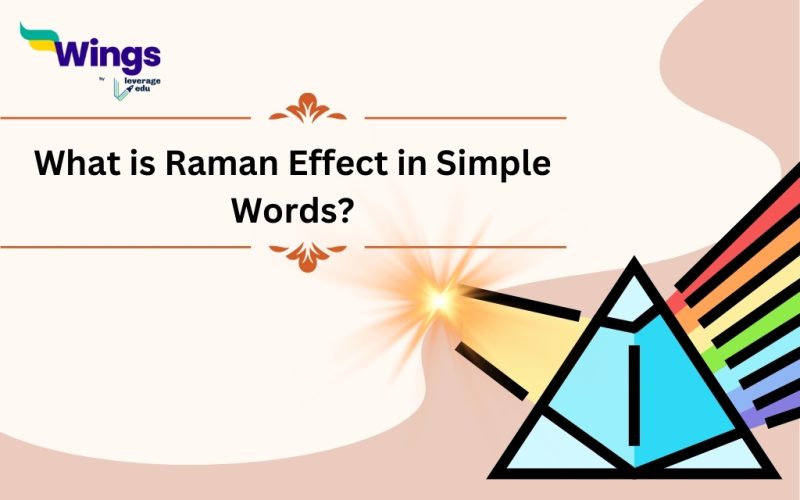Dr CV Raman has discovered the Raman Effect together with his co-discoverer KS Krishnan. He joined the Presidency College of Madras in 1902 and later completed a BA in Physics from the University of Madras. CV Raman was the gold medalist at his college. He was also the first Indian to win the Nobel Prize in Physics in 1930 for his famous discovery of scattering of light which is popularly known as the Raman Effect. Stay tuned and continue reading this article to get further information on what is Raman Effect in Simple Words!
Also Read: CV Raman Education
Raman Effect Definition
Sir CV Raman used quartz or a prism i.e. a transparent material and discovered that when a ray of light passes through the materials, it gets deflected due to changes in wavelength and frequency of waves.
Initially, CV Raman and his co-discoverer KS Krishnan named this scattering of light as “modified scattering” and subsequently the name Raman Effect was given to this exceptional discovery in the field of physics. In 1930, CV Raman received the Nobel Prize in science, especially for the discovery of Raman scattering.
Here is the Raman Spectrum of Benzene:
Also Read: Refraction of Light
Also Read: How to Prepare for UPSC in 6 Months?
What is Raman Scattering?
Raman Scattering can be another term used for the Raman effect and it is measured by spectrograph. It is the inelastic scattering of the photons when it strikes the molecules of a transparent material. In this process, energy exchange takes place and due to the deflection of light, the direction also changes.
In the Raman Effect, the molecules gain vibrational energy from the incident photon. Thus, Raman spectroscopy can give the structure of the materials.
The change in direction of the incident ray takes place due to the change in energy state. When the photon strikes the molecule it gets excited to the virtual energy state and then relaxes back to the ground state. The emitted photon will be scattered out with different energy as compared to the incident photon.
Also Read: What is Energy Engineering?
CV Raman Achievements
Mentioned below are some of the achievements of CV Raman:
| Year | Award |
| 1912 | Curzon Research Award |
| 1913 | Woodburn Research Medal |
| 1928 | Matteucci Medal |
| 1930 | Nobel Prize in Physics |
| 1930 | Hughes Medal |
| 1941 | Franklin Medal |
| 1954 | Bharat Ratna |
| 1957 | Lenin Peace Prize |
Relevant Blogs
FAQs
The Raman Effect is defined as the scattering of light when a photon strikes the molecule of a transparent material it produces photons of variable wavelength and frequency due to vibrations of the molecules. This effect is used by physicists and chemists to study the properties of materials.
Raman Spectroscopy was discovered by CV Raman in 1928. It is a technique used to determine the vibrational modes of molecules. Apart from vibrational mode, low-frequency and rotational modes can also be observed via this technique. Raman Spectroscopy is mainly used in chemistry to study the structural fingerprints of any molecule.
Raman Scattering is popularly known as the Raman Effect. It was discovered by renowned Indian physicist CV Raman. National Science Day is celebrated to commemorate the discovery of the Raman Effect on 28 February every year.
Hope you received relevant information on what is Raman Effect in simple words. For more information on such interesting topics, visit our trending events page and follow Leverage Edu.
 One app for all your study abroad needs
One app for all your study abroad needs













